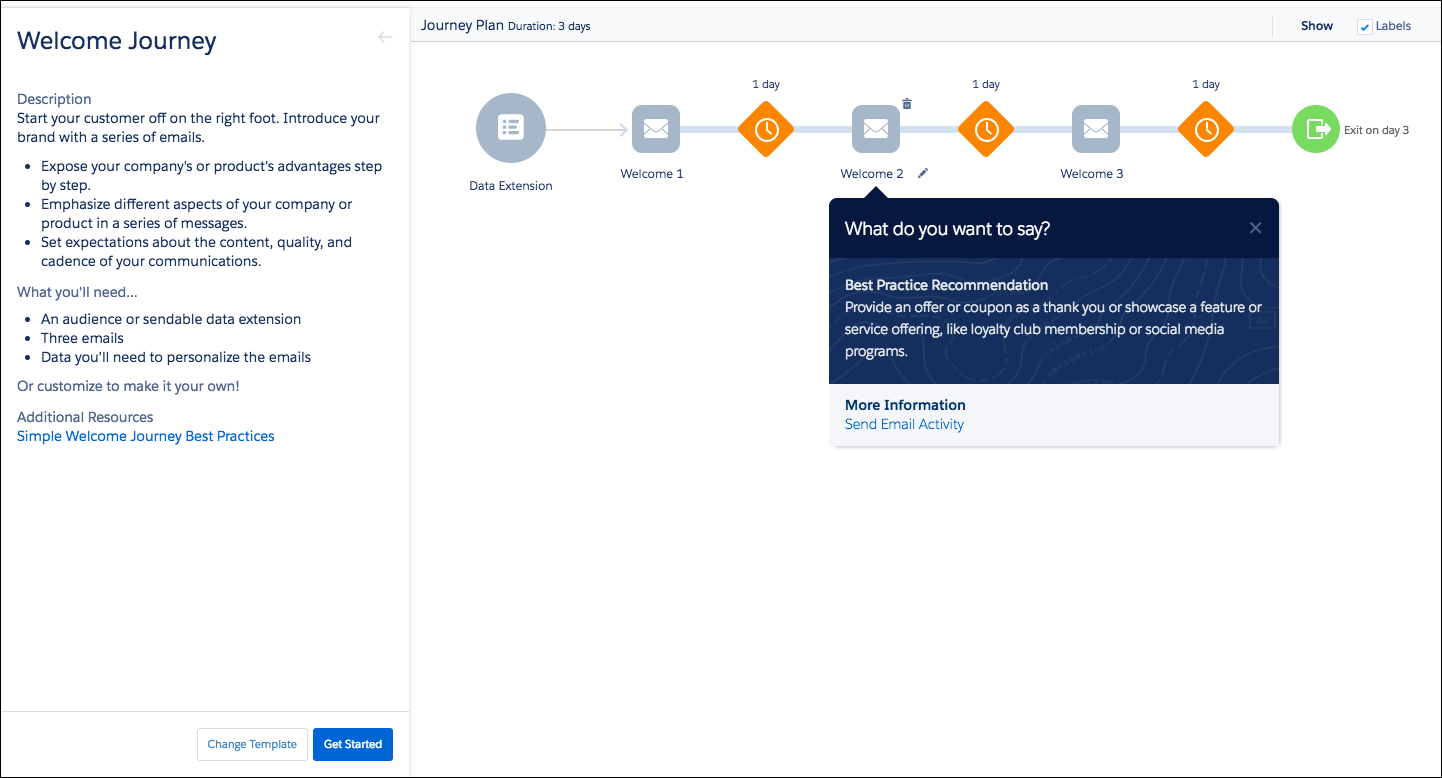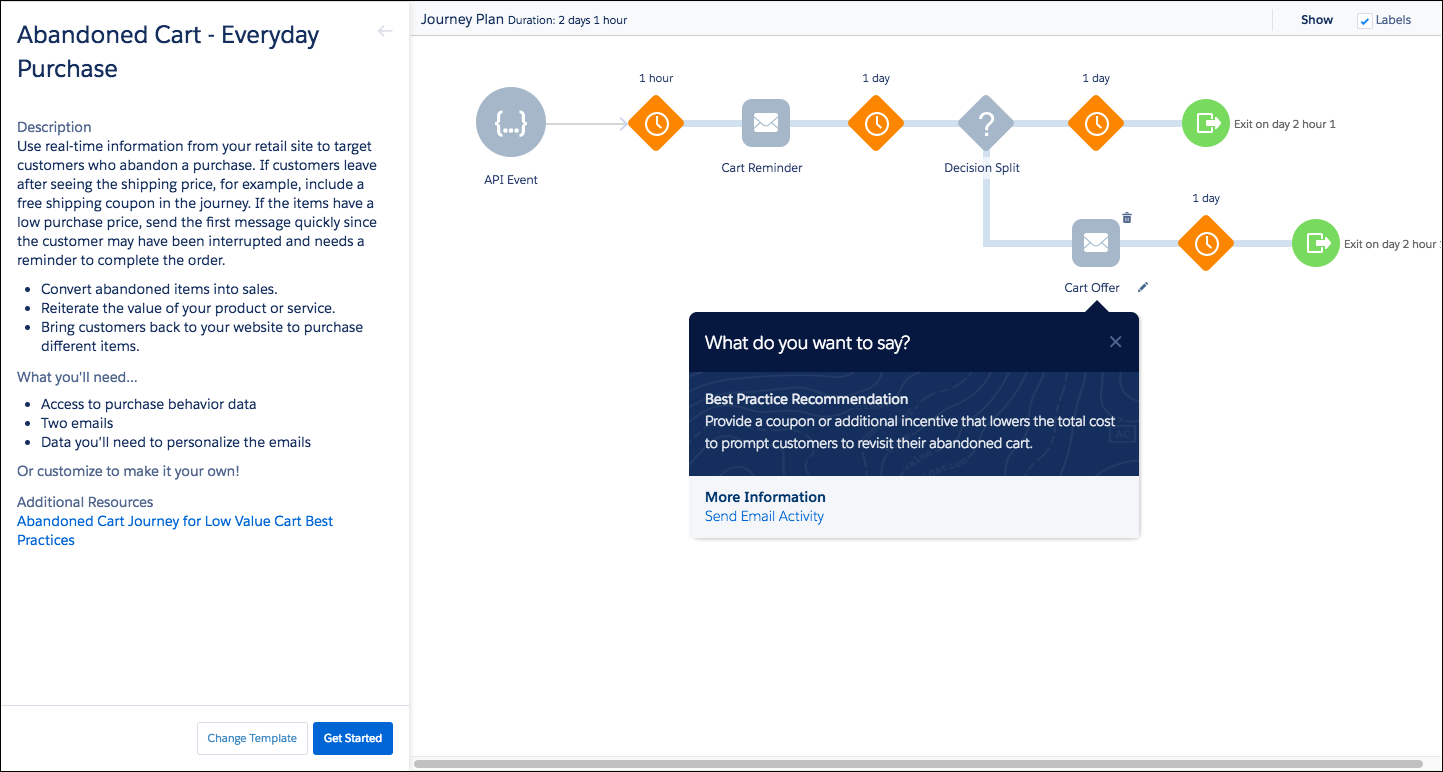Respond to Customers with Triggered Automations
Learning Objectives
After completing this unit, you’ll be able to:
- Explain the difference between scheduled and triggered automations.
- Select which actions to trigger automations for your company.
- Map out the customer journey.
Pay Attention to the Customer
Marketers drive scheduled automations. Triggered automations, by contrast, are based on actions your customers or subscribers take. These automated email messages respond to customers when they take a certain action or when their status changes. They can be a single email, like a shipping notification, or a series of emails, like a series of onboarding or “welcome to the family” messages. No matter what a company sells or what service it provides, every organization can use triggered automations to their advantage.
What types of triggered campaigns are right for your brand? Let’s start by looking at a variety of triggered automations.
- The welcome or onboarding series : Kick off this campaign when a prospect becomes a subscriber to your mailing list. You also can use this for anyone who purchases your product or service.

- Product shipping or appointment notifications : These simple notifications keep your customers informed about vital information.
- Renewal journeys : Warm up your prospects by triggering a service renewal campaign that reminds them why they bought your product or used your service and the value either provides. The idea here is to make it less likely that customers look elsewhere for alternatives.
- Abandoned cart or browse : Sometimes customers view a product on a website or put it in their cart, but then they don’t complete the checkout process. Within a few hours, you can send them an email reminding them of their interest in the product. The great news here is, this experience can move beyond retail. You can trigger an abandoned browse experience with any piece of content, whether it’s a white paper, video, article, service, or product.

Not all of these triggered automations are necessarily right for your business. Think about how your customers interact with you and decide which triggered automations are best for you.
Say Thank You
It’s a good idea for every organization to create a welcome or onboarding campaign. First of all, you want to simply say thank you to the individual for subscribing to your email list or buying your product or service. Then you want to drive success by keeping the subscriber engaged with your business. This is a fairly easy kind of campaign to set up, from both a timing and content perspective. However, it does involve a little testing.
Let’s take each prong of this campaign in turn.
First, when someone subscribes or opts in to your email list, welcome them to your family. Time this first email to go out within a day of the subscriber’s completion of the form or request for information. Thank your new subscriber and lay out exactly what they can expect: the number of emails, their frequency, and what type of content they contain. This first email is about setting the right expectations.
Second, an onboarding campaign for new customers is a great opportunity to drive success with your product or service. After the first email, the following messages can include tips and tricks on how to best use the service or product. And the best way to craft these messages is to talk to your customer service team. Ask them, “What are your top five new-customer questions?” Their answers can help you create some great content.
You can create a series of emails that drive customer success. The content can consist of articles, videos, and links to help documentation—anything that helps customers better use your product. These emails can have a great effect on your business in two ways. They can reduce the number of calls to your customer service team. And they can increase customers’ satisfaction by anticipating their questions and needs. Talk about intelligent marketing!
Map Out the Customer Journey
Now take the onboarding journey from your customers’ perspective. Pretend you’re a brand-new customer. Start with an online search for the products or services in your industry. What comes up? How does your company rank against competitors?
Go from searching to filling out a subscription form and see which steps of the process are easy. What goes smoothly? Where is there friction? Measure the experience on desktop versus mobile devices and see if the process is consistent.
Next, browse your website, put something in your cart, and then abandon it. See what the experience is like—what works, and what can be better?
Make a purchase and see what that process is like. This a great opportunity to understand your customers’ buying experience.
When you’ve mapped your customer journey, go through the same process with brands you think are great at marketing. See what you can learn from your experience with those brands and apply that knowledge to your own program. This can give you a good place to start when you build your triggered automations.
Now that you understand all of the ways that customers interact with your brand throughout their customer journey, you can start mapping out those experiences and deciding where a thoughtful email message can help create a positive experience with your brand.